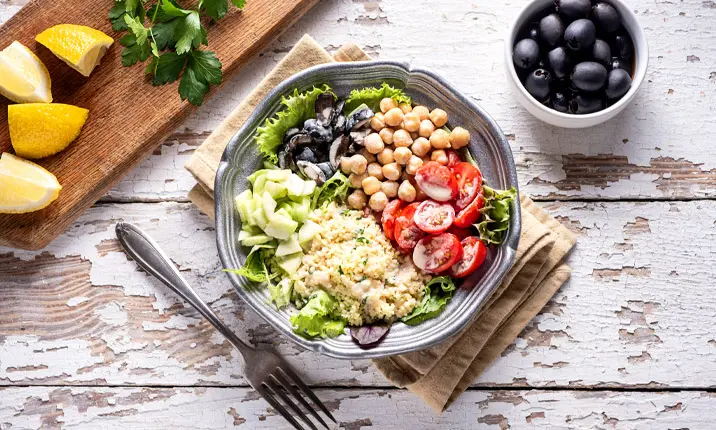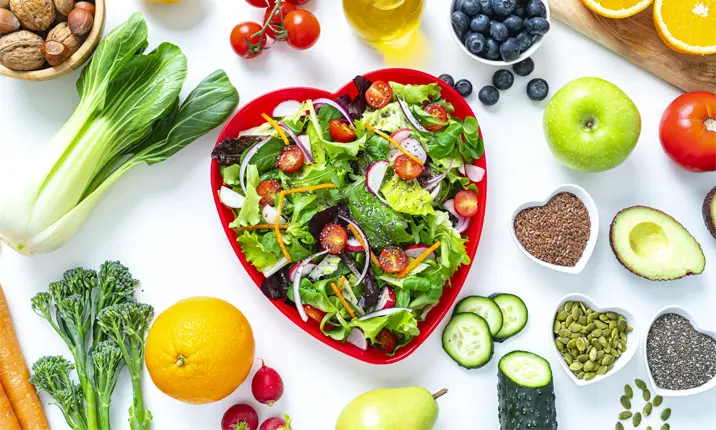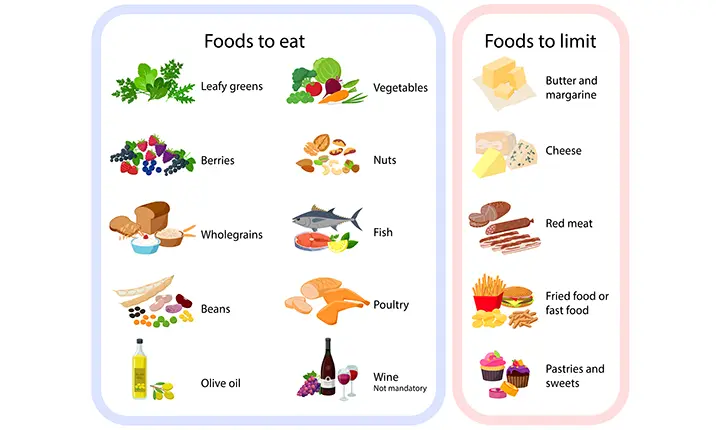As we age, it may be natural to experience occasional forgetfulness or slower thinking. However, if you begin to struggle with familiar tasks or remembering newly learned information, it could indicate a more serious condition like Alzheimer’s disease.
Given that age is the primary risk factor for Alzheimer’s disease, and Singapore is projected to become a super-aged society by 2026*, it’s crucial to explore ways to reduce the risk of this degenerative neurological condition for both ourselves and our loved ones.
Research suggests that what we eat is one of the factors that may help reduce the risk of Alzheimer’s disease. Let’s delve into how your food choices can nourish not just your body, but also your brain!
*A super-aged society refers to one where individuals 65 years old and above constitute 21% of the entire population.
What is Alzheimer’s disease?
Alzheimer’s disease is a degenerative brain disease, linked to the build-up of plaques (beta-amyloid) and protein (tau) tangles in the brain. This build-up disrupts normal cell function and leads to cell damage and death. As a result of these changes, many experience declining memory and cognitive function.
Common symptoms of Alzheimer’s disease include trouble recalling recent events and conversations, confusion, disorientation, and poor judgement. This condition is also progressive, meaning that the disease and its symptoms get worse with time.
Alzheimer’s disease and its relationship with dementia
Alzheimer’s disease is the most common form of dementia, accounting for about 7 in 10 cases. Dementia affects 1 in 10 people in Singapore above 60 years old, and this condition is only getting more prevalent as Singapore’s population ages.
To clarify their differences, dementia refers to a range of symptoms that involve a decline in cognitive and social abilities, with various causes. Alzheimer's disease is one specific cause of dementia, characterised by symptoms such as trouble remembering recent conversations and poor judgment.
Causes of Alzheimer’s disease
The exact causes of Alzheimer’s disease aren't fully understood, but studies suggest that it seems to be influenced by ageing, family history, lifestyle (such as tobacco use), activity (mental, physical and social), diet, and environmental factors.
Certain conditions like high blood pressure, high cholesterol, and diabetes may also increase the risk of Alzheimer’s disease.
Is there a cure for Alzheimer’s disease?
There is no known cure for Alzheimer’s disease, and treatment is focused on slowing its progression and managing symptoms. This makes taking steps to prevent this disease even more important.
How can your diet help lower your risk of Alzheimer’s disease?
Some studies suggest that certain dietary patterns and nutrients can influence brain health and potentially reduce the risk of cognitive decline associated with Alzheimer’s disease.
Discover which diets and foods could make a difference for your brain health below.
The Mediterranean diet
The Mediterranean diet emphasises consuming plant-based foods like fruits, vegetables, whole grains, nuts, and seeds. It also encourages eating foods high in healthy fats, such as olive oil, and sources of omega-3 fatty acids, like fish. Additionally, it recommends moderate consumption of poultry and advises limiting red meat, sugar, and processed foods.
This diet is generally high in antioxidant and anti-inflammatory compounds, helping to protect brain cells from oxidative stress and inflammation and reducing the incidence of plaques and protein tangles in the brain, which may help protect brain cells and improve cognitive function.
Serving goal and serving size
- Fruits
Serving goal: 3 servings per day
Serving size: ½ cup
Examples: Apples, oranges or strawberries - Vegetables
Serving goal: At least 3 servings per day
Serving size: ½ cup cooked vegetables, 1 cup raw vegetable
Examples: Broccoli, carrots, cucumber or potatoes - Wholegrains
Serving goal: 3 to 6 servings per day
Serving size: ½ cup cooked grains or pasta, 1 slice bread
Examples: Oats, brown rice, wholegrain bread, cereal, or wholegrain pasta - Fish
Serving goal: 3 servings a week
Serving size: 3 to 4 ounces
Examples: Fish high in omega-3 such as salmon, tuna or sardines - Legumes (Beans and Lentils)
Serving goal: 3 servings per week
Serving size: ½ cup
Examples: Lentils, kidney beans, peas or chickpeas - Nuts
Serving goal: At least 3 servings per week
Serving size: ¼ cup nuts, or 2 tablespoons nut butter
Examples: Walnuts, almonds or hazelnuts - Poultry
Serving goal: No more than once per day
Serving size: 3 ounces
Examples: Lean chicken or turkey - Extra virgin olive oil
Serving goal: 1 to 4 servings per day
Serving size: 1 tablespoon
The Dietary Approaches to Stop Hypertension (DASH) diet:
The DASH diet is designed to reduce the risk of high blood pressure or hypertension, which is a risk factor for cognitive decline.
This diet focuses on vegetables, fruits, wholegrains, low-fat dairy products, fish, poultry, beans and nuts. It also advises limiting food that is high in salt or sodium, added sugar and saturated fat, for example fatty meat and full cream dairy products.
Generally, the DASH diet is rich in potassium, calcium, and magnesium, which helps keep blood vessels healthy and muscles relaxed.
Serving goal and serving size
- Fruits
Serving goal: 4 to 5 servings per day
Serving size: ½ cup fruit, or 1 medium fruit
Examples: Apples, pears or peaches - Vegetables
Serving goal: 4 to 5 servings per day
Serving size: ½ cup cooked vegetable, 1 cup raw vegetable
Examples: Spinach, broccoli or carrots - Whole grains
Serving goal: 6 to 8 servings per day
Serving size: ½ cup cooked grain or pasta, 1 slice bread
Examples: Whole-grain bread, cereal or pasta - Lean meats, poultry, fish
Serving goal: 6 servings or fewer per day
Serving size: 1 ounce meat or poultry or fish, 1 egg
Examples: Chicken, fish - Low-fat dairy
Serving goal: 2 to 3 servings per day
Serving size: 1 cup of milk or yoghurt
Examples: Low-fat milk, low-fat yoghurt or low-fat cheese - Nuts, seeds, legumes
Serving goal: 4 to 5 servings per week
Serving size: 1 to 3 nuts, 2 tablespoons nut butter, ½ cup cooked beans
Examples: Nut butter, lentils or peas. - Fats and oils
Serving goal: 2 to 3 servings per day
Serving size: 1 teaspoon soft margarine, 1 teaspoon cooking oil
Examples: Margarine, vegetable oil - Sweets and added sugar
Serving goal: 5 servings or fewer per week
Serving size: 1 tablespoon sugar or jelly or jam
The Mediterranean-DASH Intervention for Neurodegenerative Delay (MIND) diet:
The MIND diet merges the Mediterranean diet with the Dietary Approaches to Stop Hypertension (DASH) diet. It focuses on consuming foods from the below 10 food groups and limiting consumption of foods from the below 5 food groups.
Specifically, the diet’s focus on the consumption of green, leafy vegetables is associated with lower levels of plaques and protein tangles in the brain. The 10 foods stated below are also rich in polyphenols and antioxidants, which can help to reduce the build-up of free radicals or oxidative stress in the brain.
The other beneficial nutrients found in the recommended foods below include Vitamin E, fibre, folate, Omega-3 fatty acids, B vitamins, carotenoids and flavonoids, which all have a positive effect on brain health.
10 foods to eat on the MIND diet:
- Green leafy vegetables
Serving goal: A minimum of 6 servings a week
Serving size: 2 cups raw greens or 1 cup cooked greens
Examples: Spinach, kale or collard greens - All other vegetables
Serving goal: 2 or more servings per day, at least 1 serving of green leafy vegetable
Serving size: 2 cups raw vegetable or 1 cup cooked vegetable
Examples: Cabbage, eggplant or asparagus - Berries
Serving goal: A minimum of 2 servings a week
Serving size: 1 cup of berries
Examples: Blueberries, strawberries or raspberries - Nuts
Serving goal: A minimum of 5 servings a week
Serving size: 1 ounce of nuts
Examples: Almonds, pistachios or cashew nuts - Wholegrains
Serving goal: A minimum of 3 servings a day
Serving size: ½ cup cooked grains
Examples: Brown rice, whole wheat pasta and 100% whole wheat bread. - Fish
Serving goal: At least 1 serving a week
Serving size: 4 ounces
Examples: Fatty fish is recommended, including salmon, mackerel, herring, and sardines - Beans
Serving goal: A minimum of 4 servings a week
Serving size: ½ cup cooked beans
Examples: Lentils, soybeans and any other kind of bean - Poultry
Serving goal: At least 2 servings a week
Serving size: 3 ounces
Examples: Chicken and turkey - Olive oil
Use this as your main cooking oil daily - Wine
Serving size: 1 glass per day, though not a necessary feature of this diet
5 foods to limit on the MIND diet:
- Butter and margarine
Serving size: Less than 1 tablespoon a day - Cheese
Serving size: Less than 1 serving a week - Red meat
Serving size: Fewer than 4 servings a week of red meat - Fried food or fast food
Serving size: Less than 1 serving a week - Pastries and sweets
Serving size: Fewer than 5 servings a week
Other important factors to reduce your risk
In addition to diet, you can make other lifestyle tweaks to reduce your risk of developing Alzheimer’s disease. Notably, it's important to stay physically and mentally active as you age. This means doing mentally stimulating activities (like playing games, reading, and listening to music), getting enough sleep, and staying connected with friends and family.
Eat well, live well
Adopting a healthy diet and lifestyle can potentially lower the risk of Alzheimer’s disease and promote long-term brain health, and the Mediterranean, DASH and MIND diets may help achieve these outcomes.
For many of us, starting a new diet can seem challenging, especially if we’re accustomed to a different eating pattern or have pre-existing conditions.
Rest assured that our qualified dietitians at Mount Elizabeth Hospitals, Gleneagles Hospital and Parkway East Hospital are here to help you make the switch gradually and safely tailored to your needs, regardless of your age or medical condition. To book an appointment, click here.

















